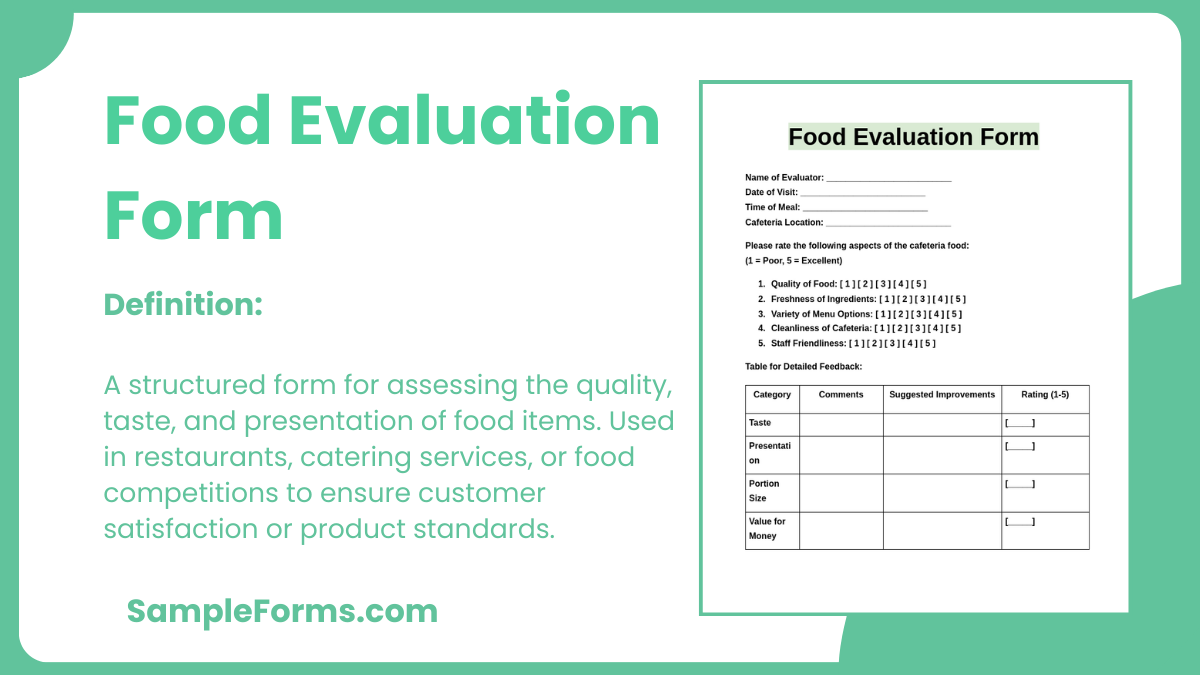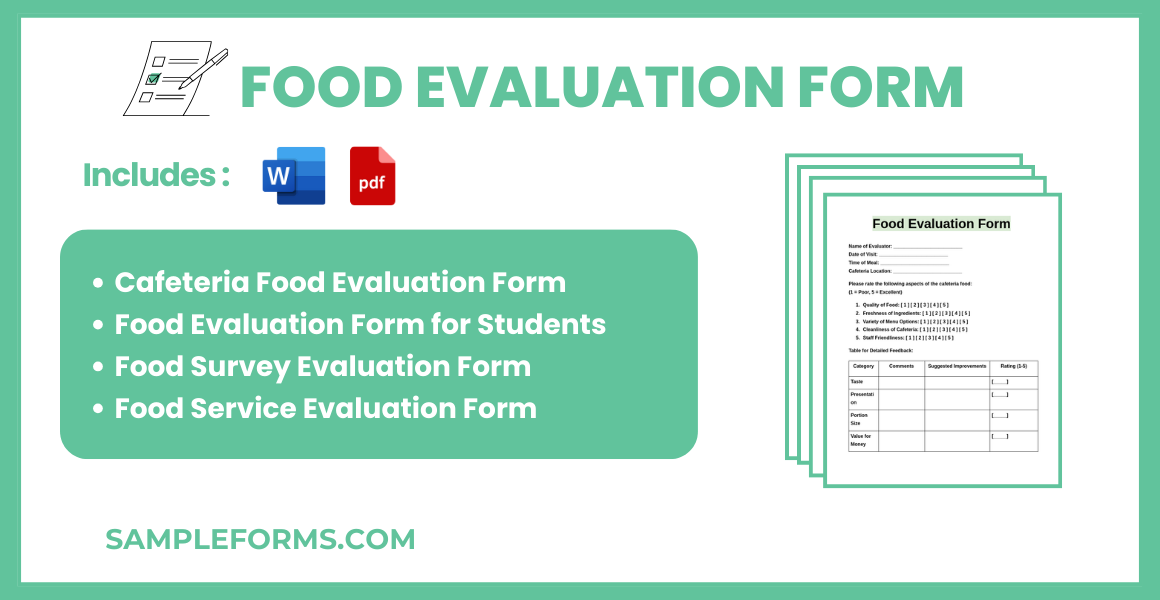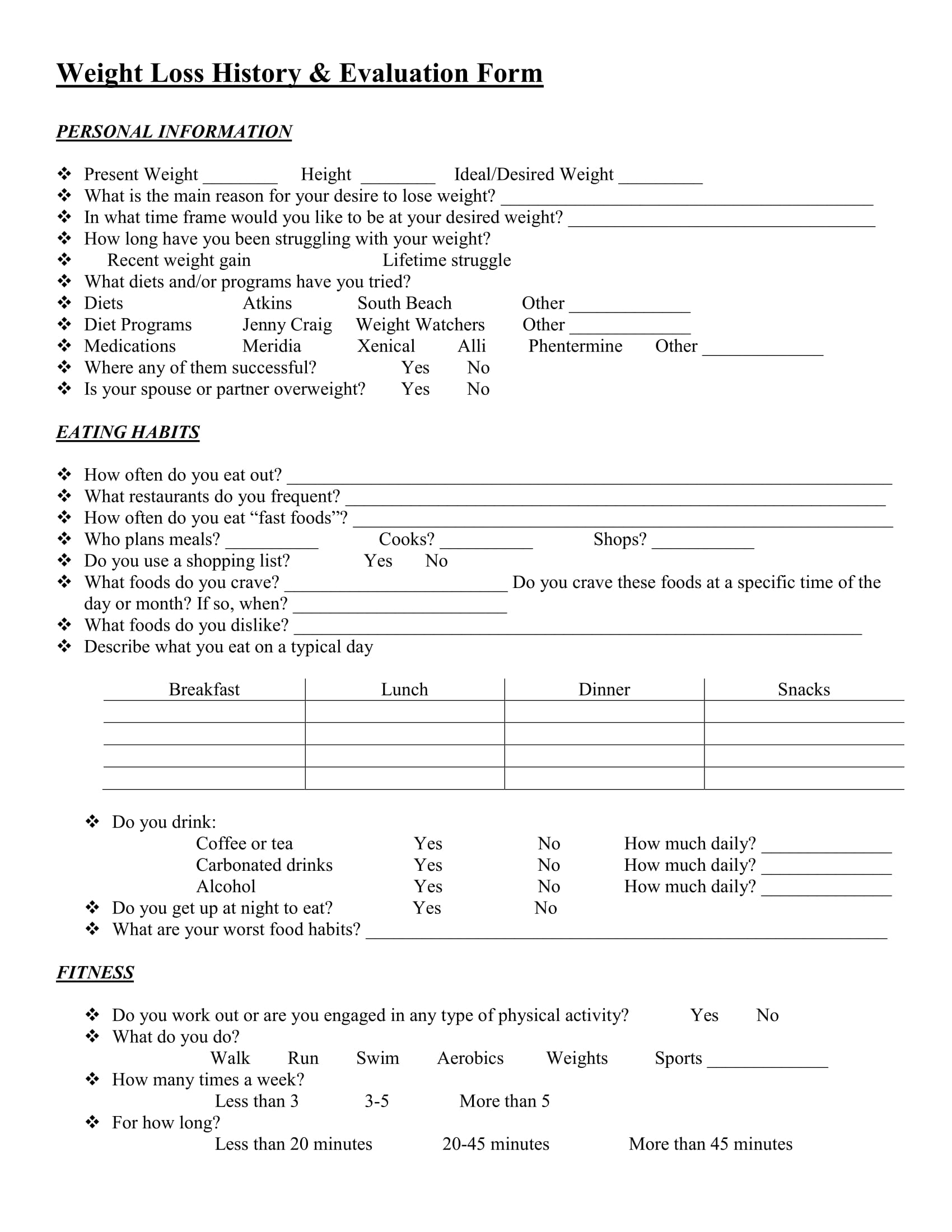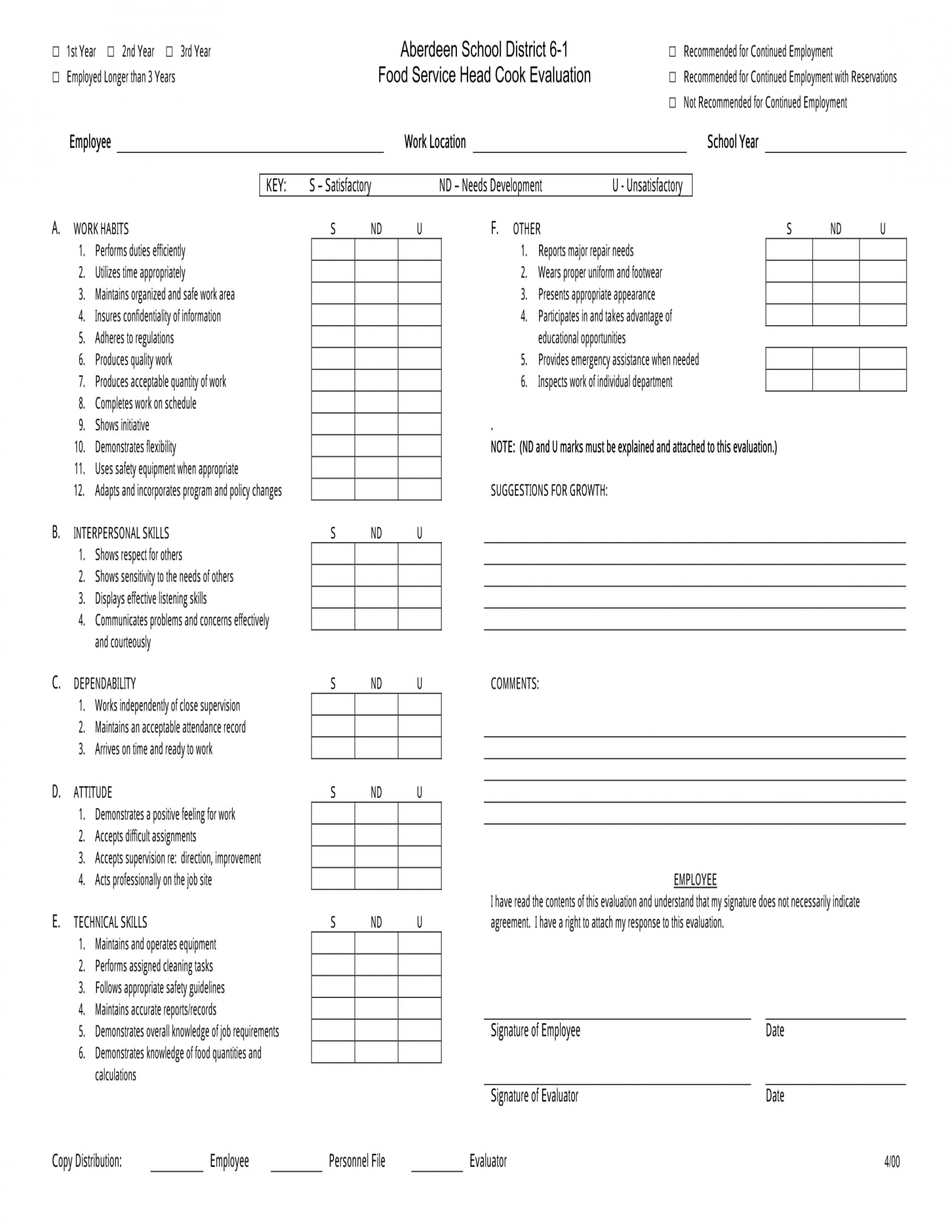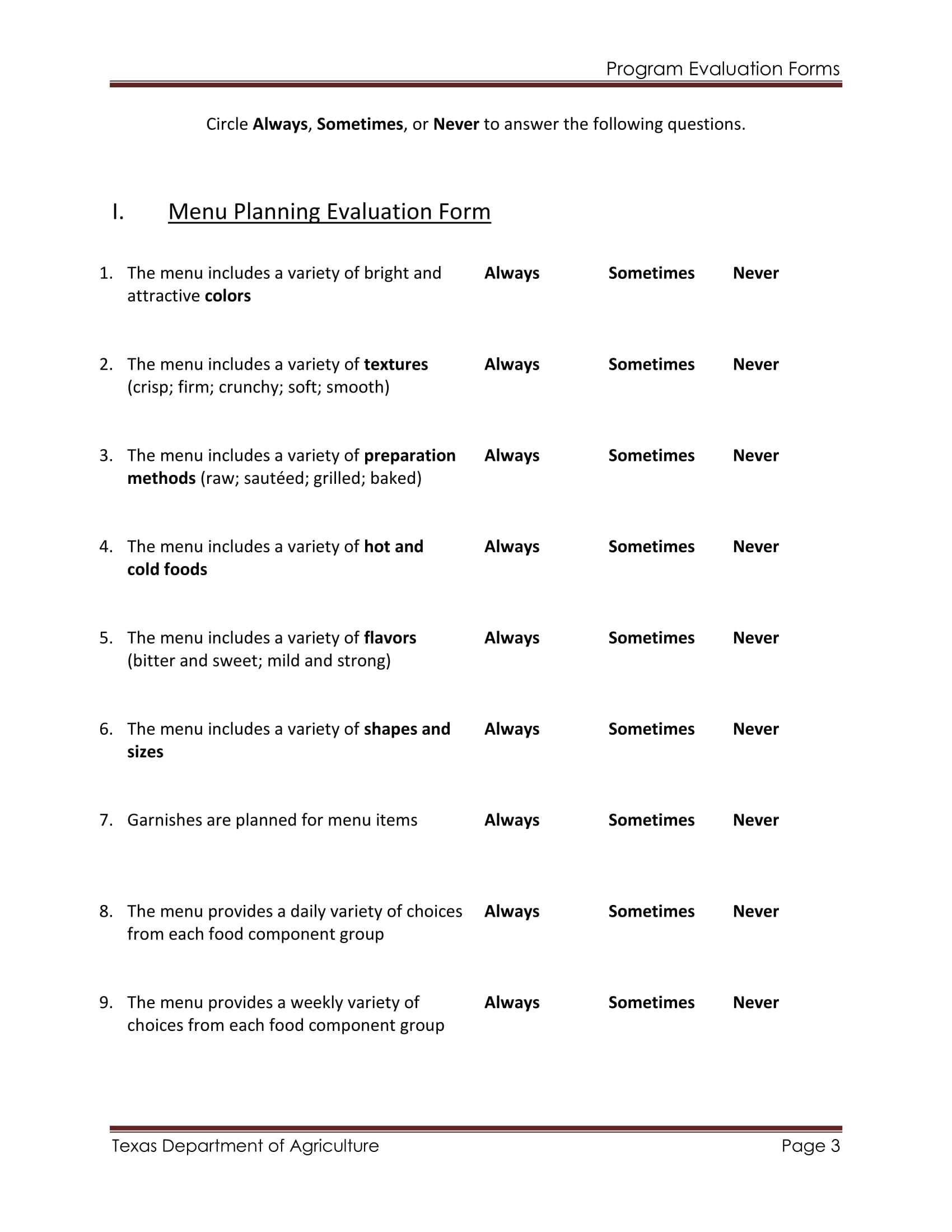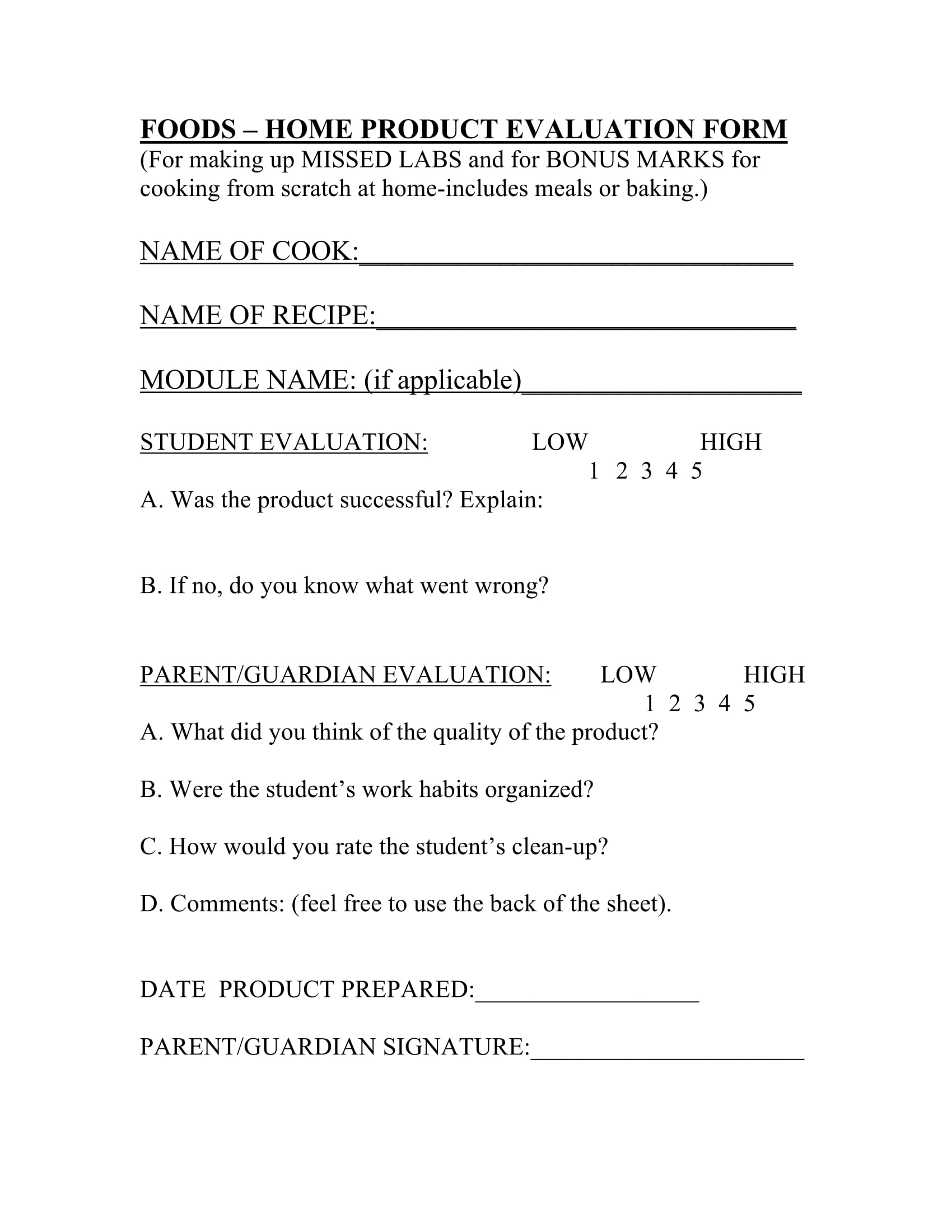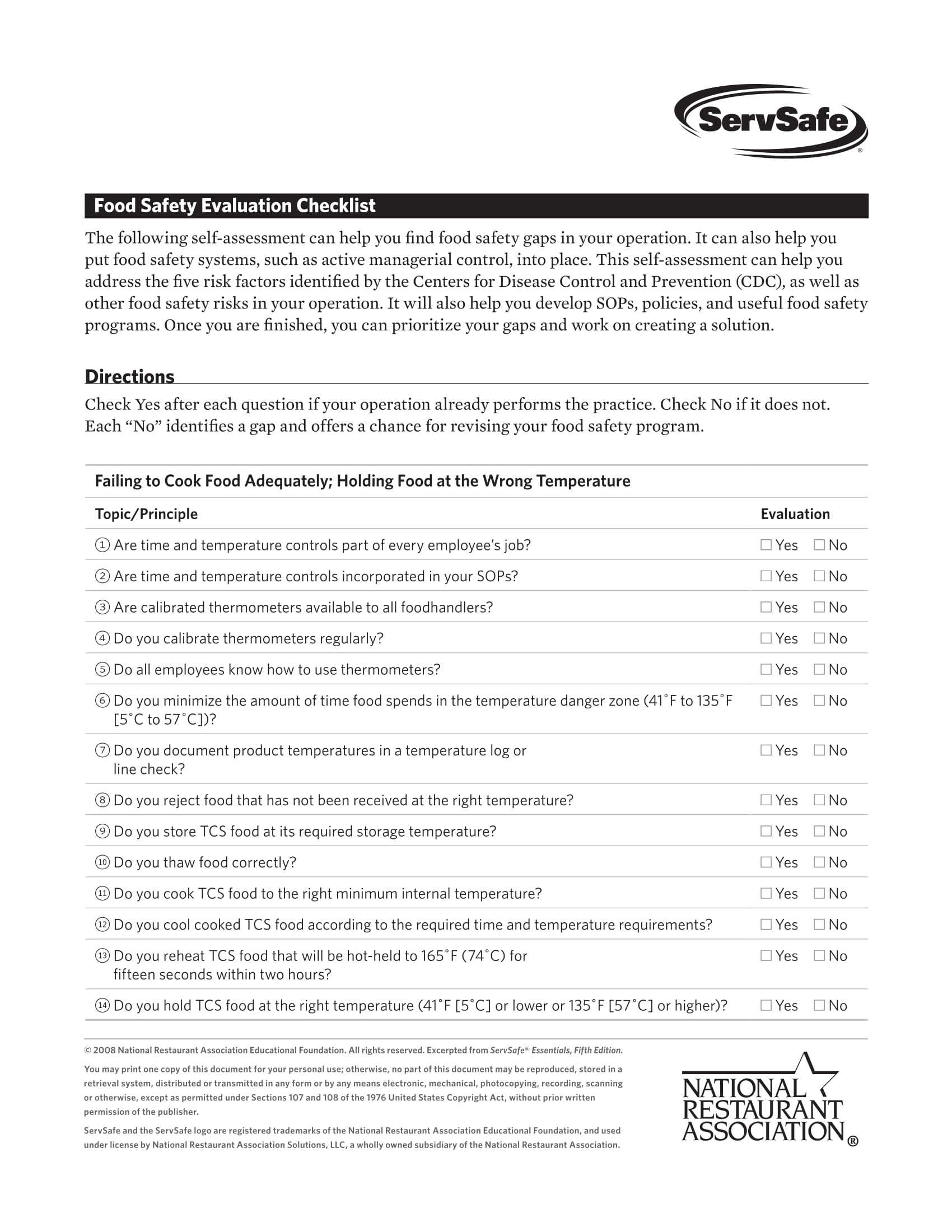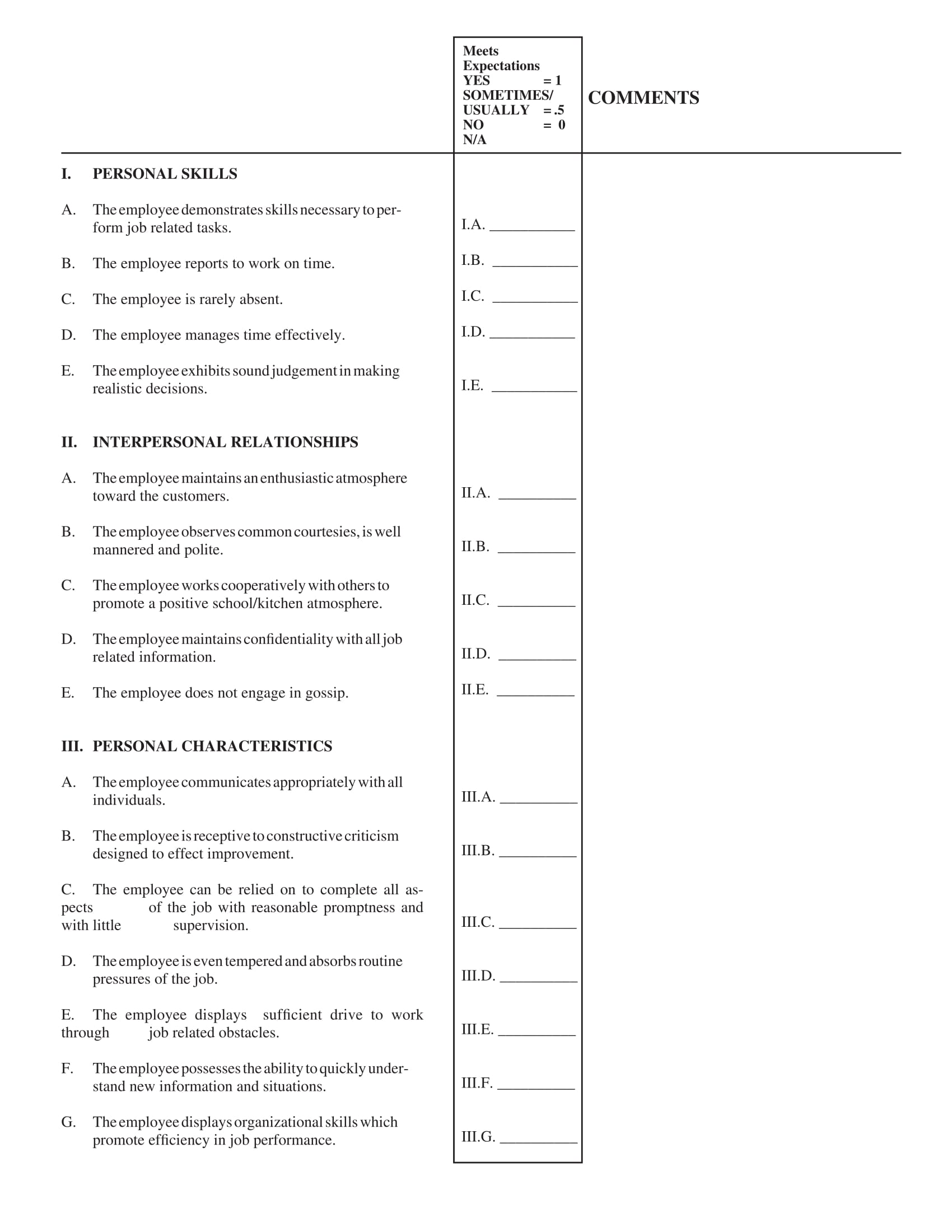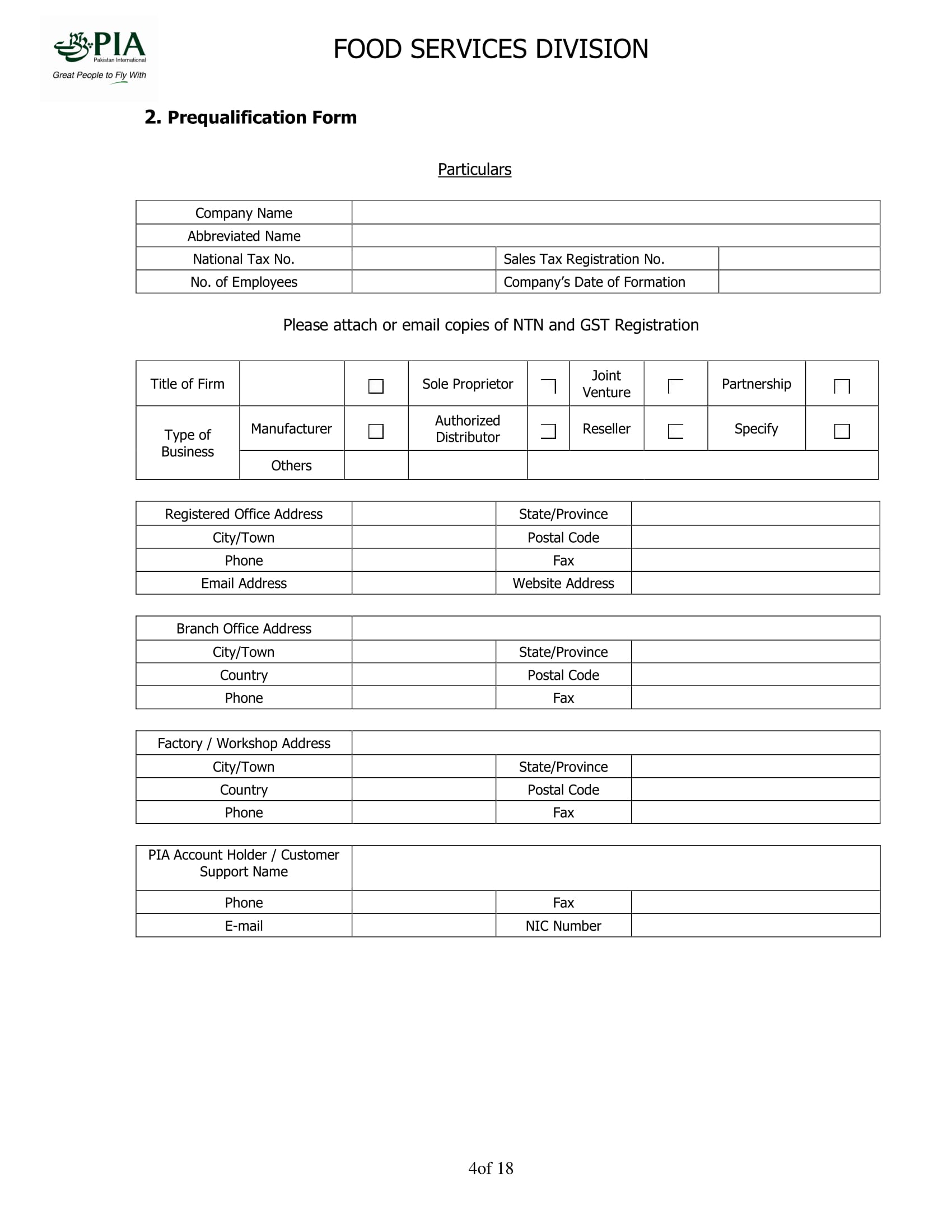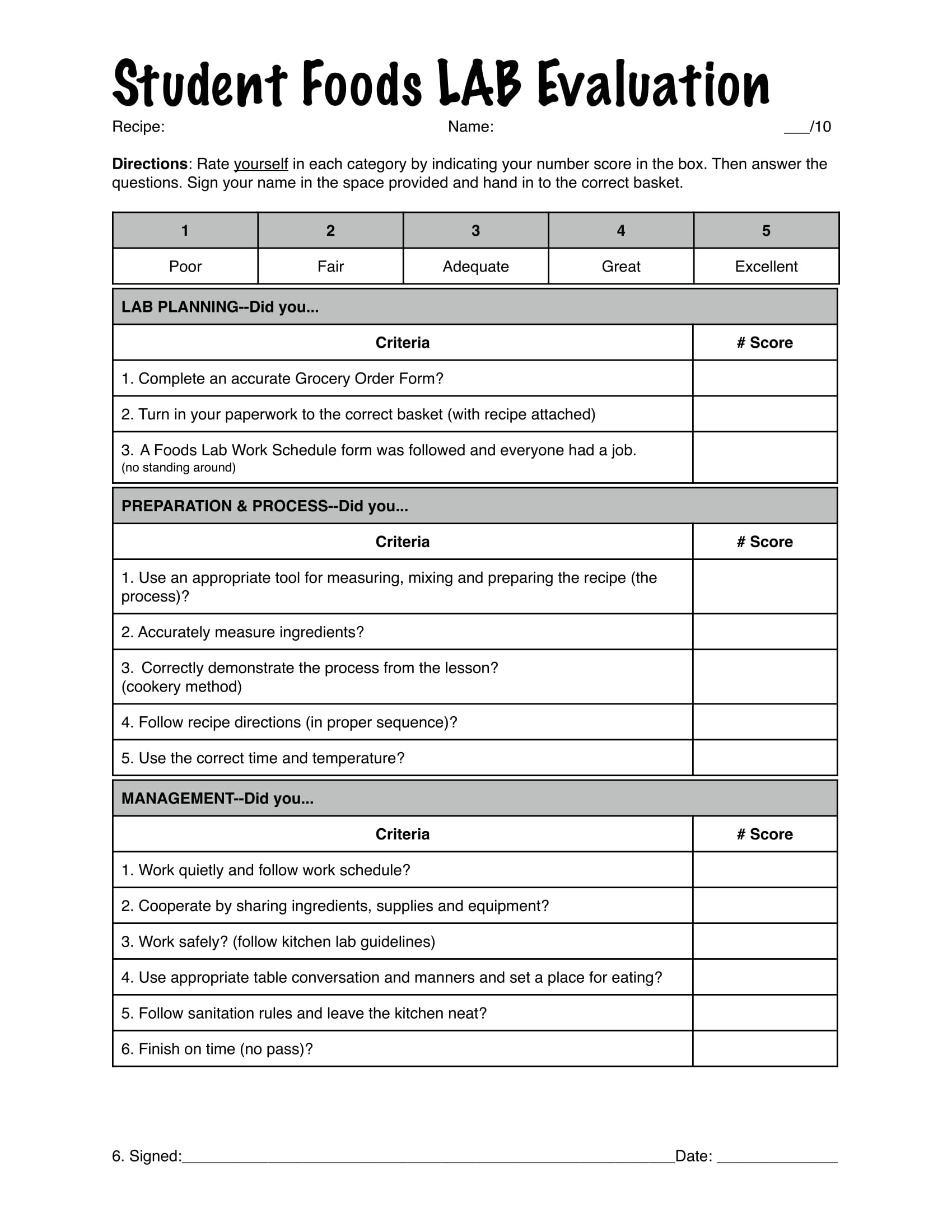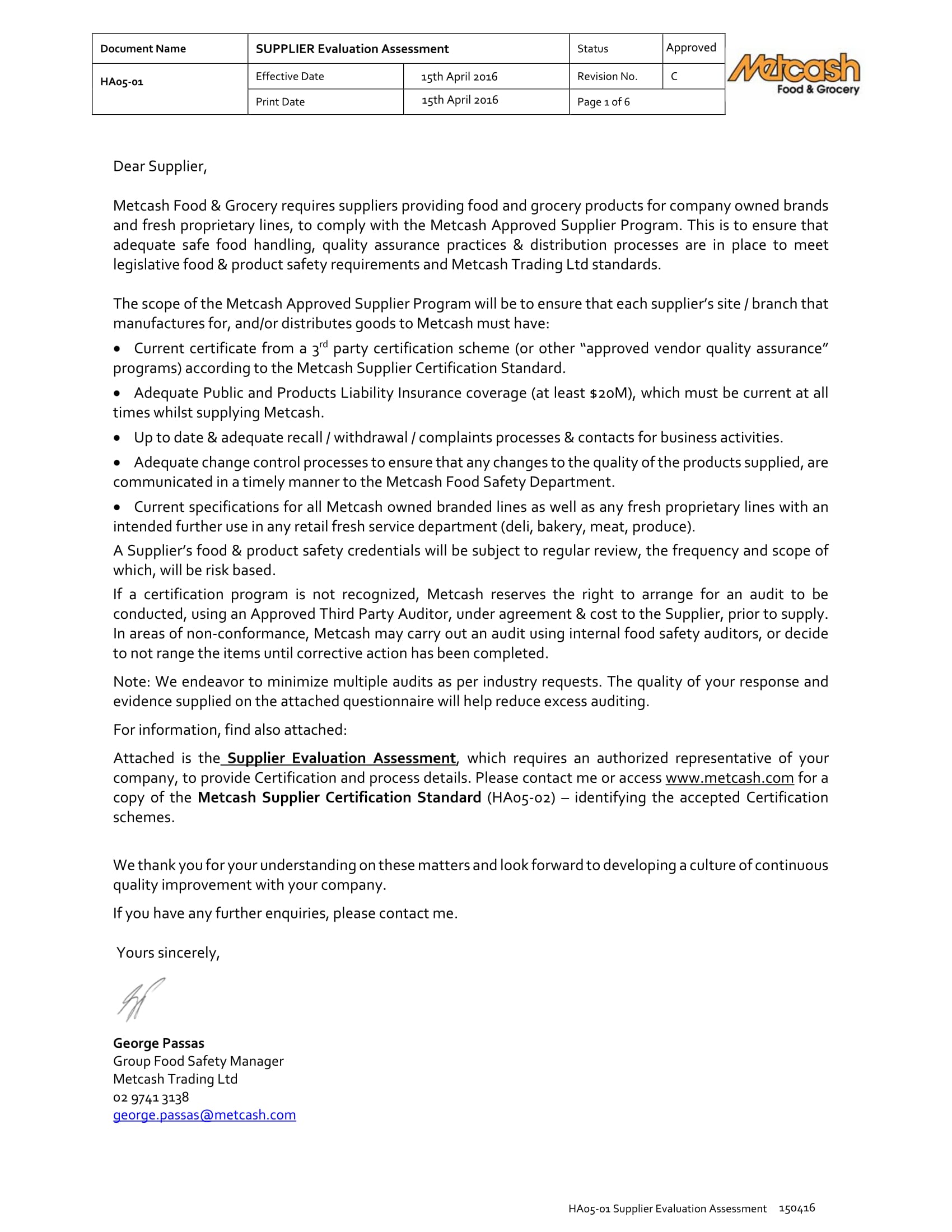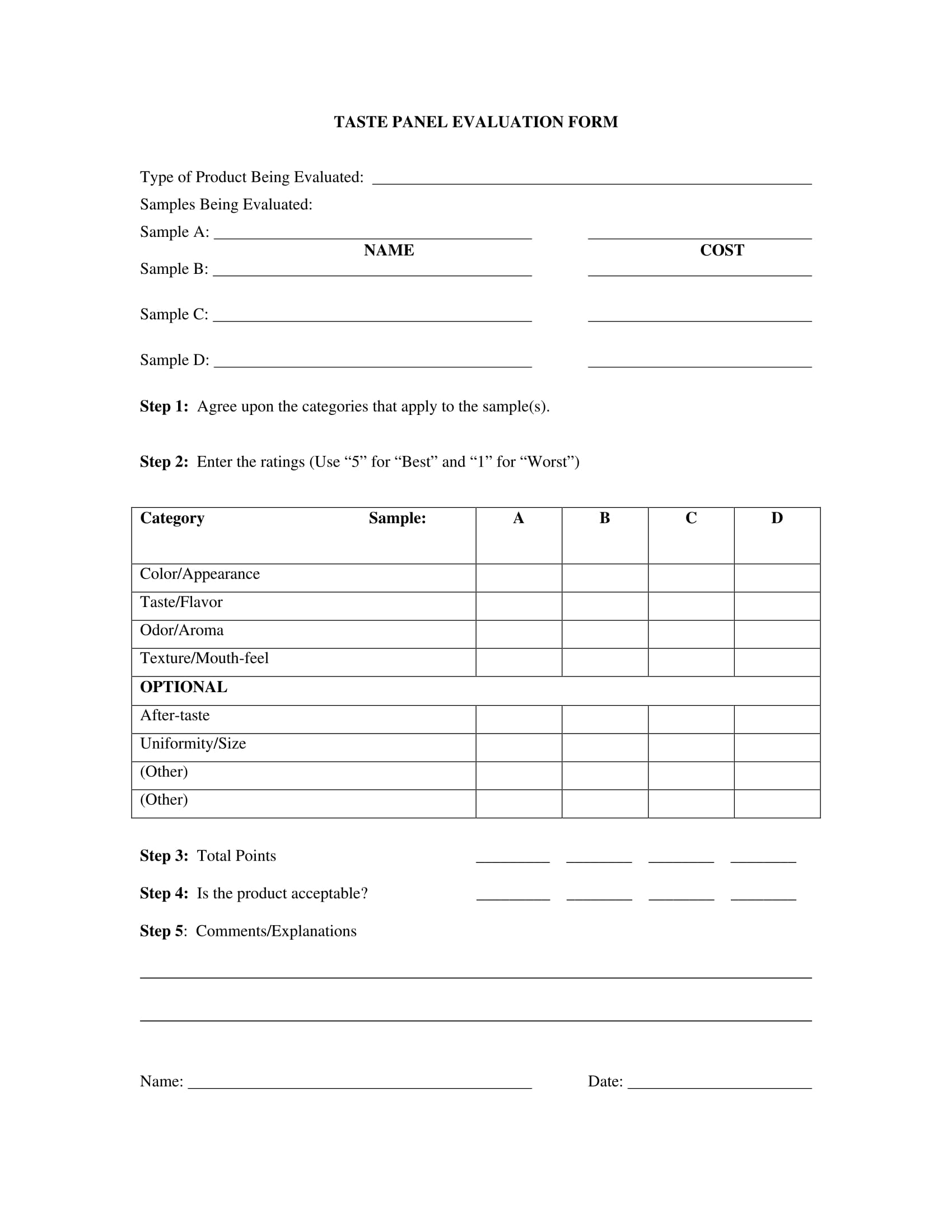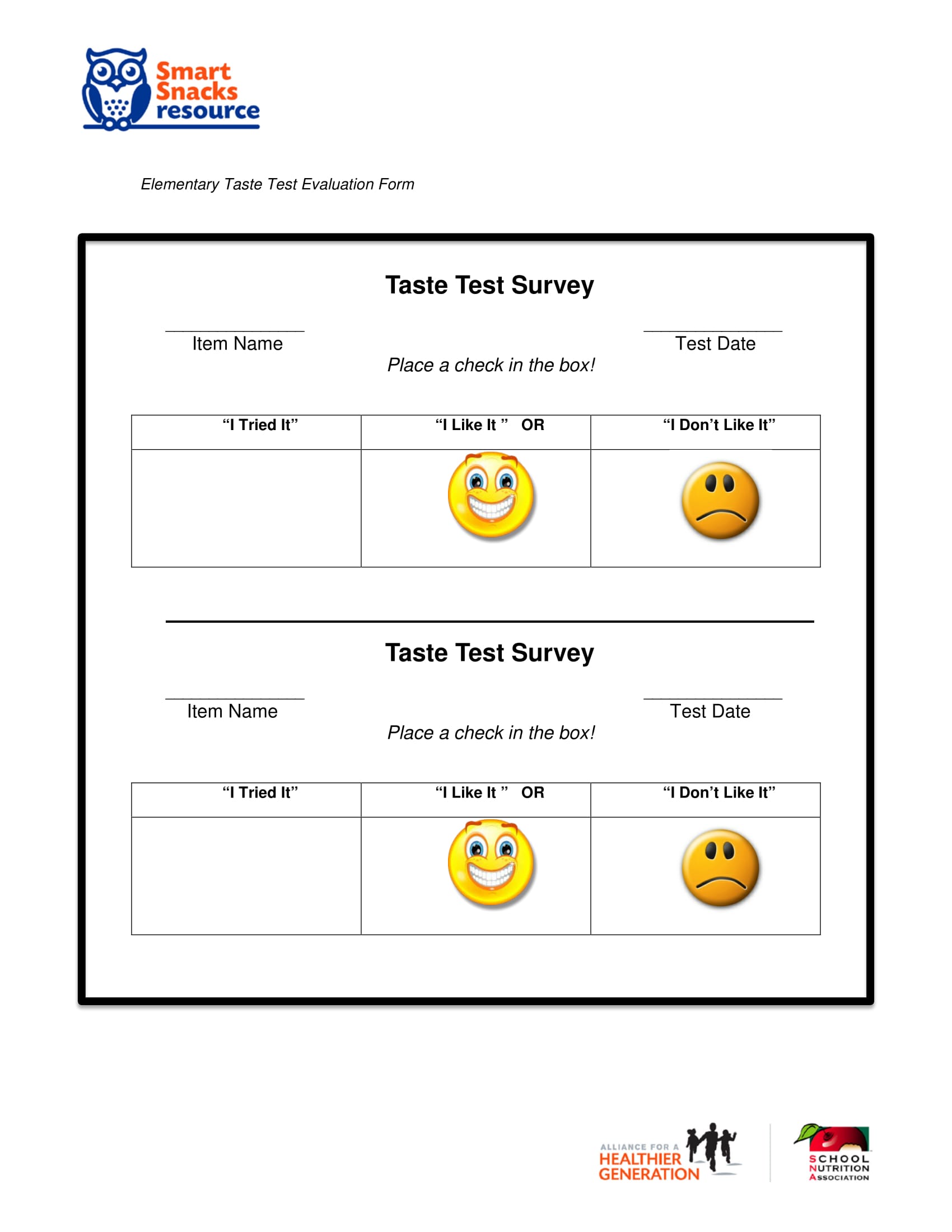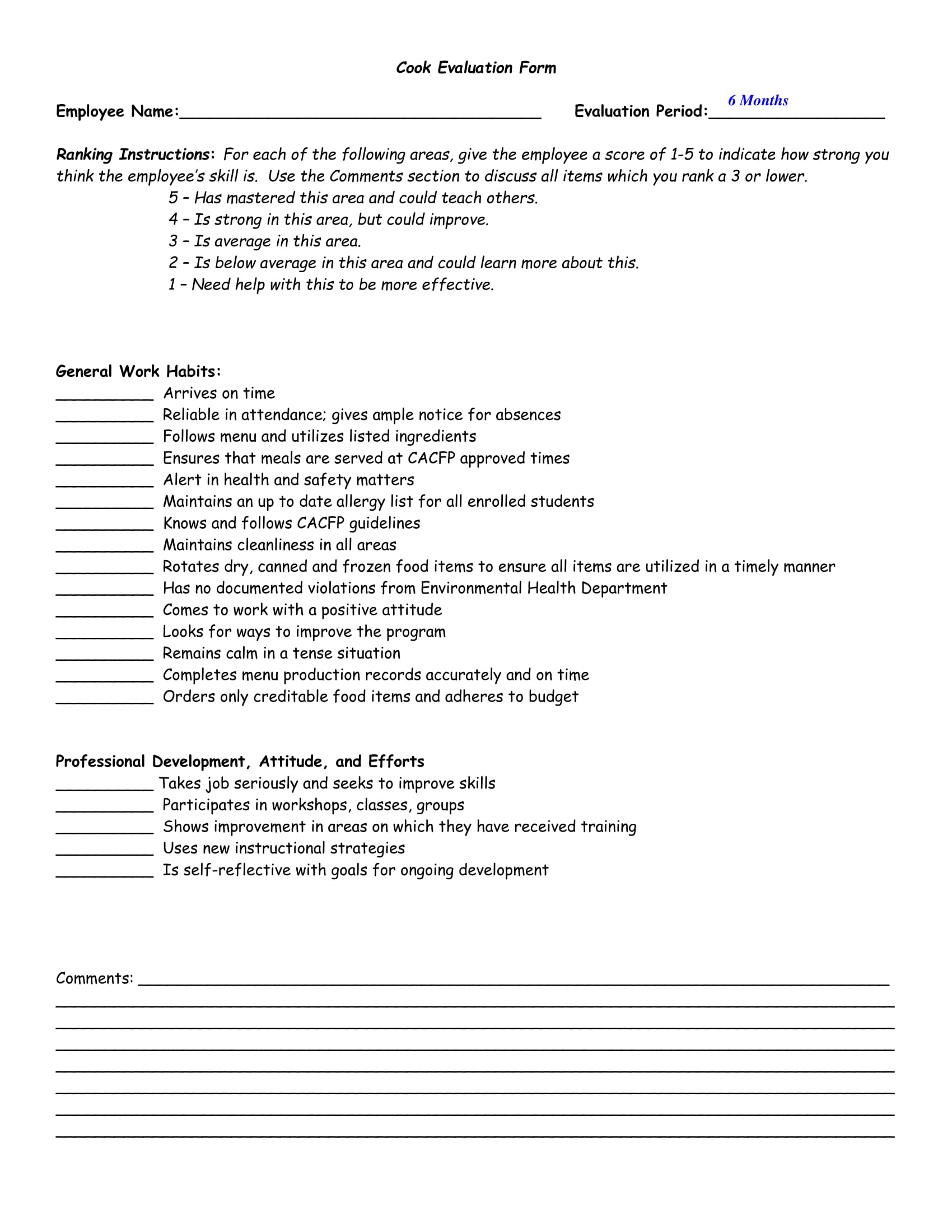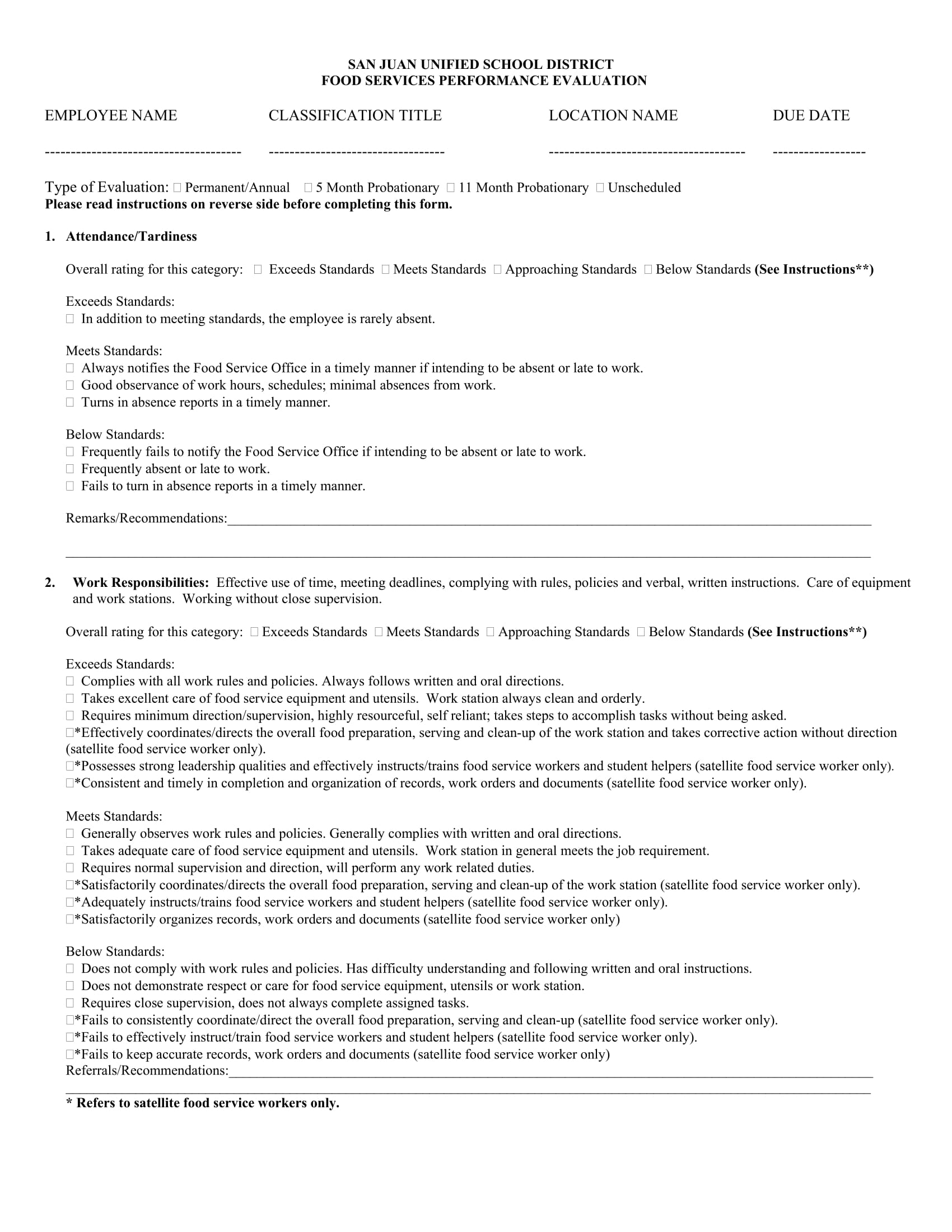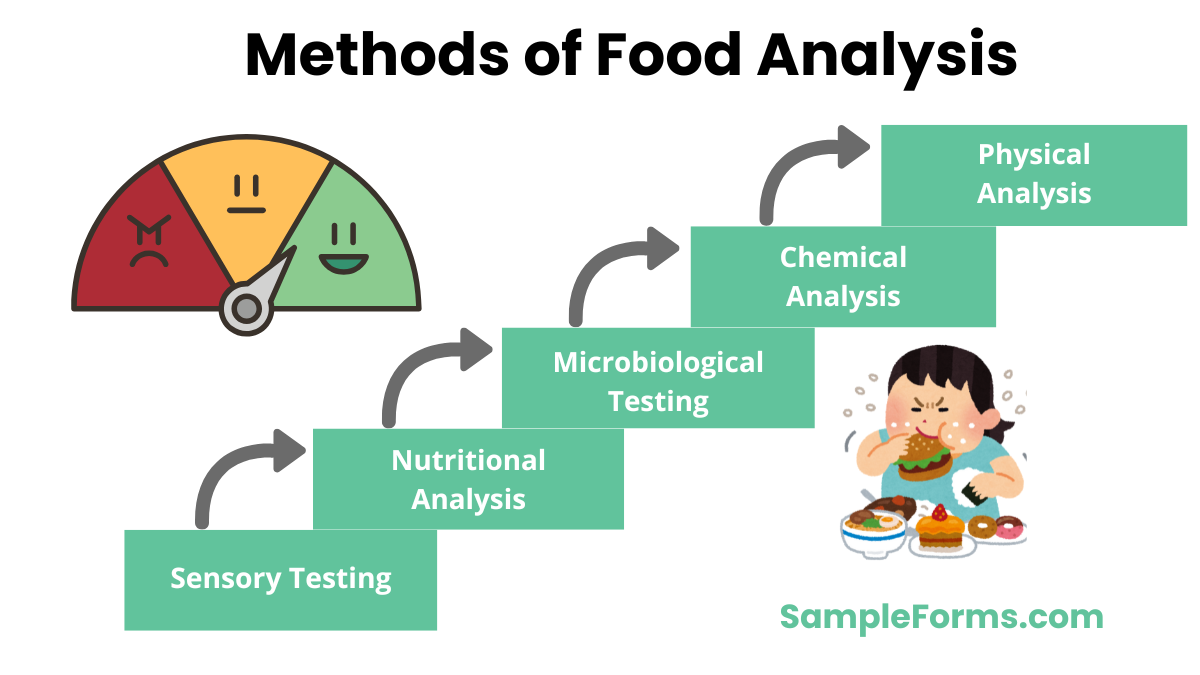A Food Evaluation Form is a powerful tool to gather feedback on the quality, taste, presentation, and overall satisfaction of food served. Whether you’re a restaurant owner, school administrator, or event planner, utilizing a well-structured Evaluation Form can help refine your menu, meet dietary needs, and boost customer satisfaction. This guide offers insights on how to effectively use a Food Sensory Evaluation Form to collect actionable feedback, ensuring your food service meets high standards
Download Food Evaluation Form Bundle
What is Food Evaluation Form?
A Food Evaluation Form is a document used to collect feedback on various aspects of food, such as flavor, texture, presentation, and overall satisfaction. It helps organizations like schools, restaurants, and event planners gather insights into customer preferences and improve their offerings. This form is crucial in maintaining high food quality standards.
Food Evaluation Format
Heading: Food Quality Evaluation for [Restaurant/Event]
1. Personal Details
- Name, Contact Information, Date, and Time of Visit.
2. Food Quality Assessment
- Sections to rate taste, presentation, portion size, and overall quality of dishes.
3. Service Quality
- Evaluate the attentiveness, friendliness, and professionalism of the staff.
4. Cleanliness & Ambience
- Rate the cleanliness of the dining area, kitchen (if visible), and restroom facilities.
5. Suggestions & Comments
- Space for customers to provide open-ended feedback and suggestions for improvements.
6. Loyalty Program Sign-Up
- Option for customers to join a loyalty program for future discounts and promotions.
Cafeteria Food Evaluation Form
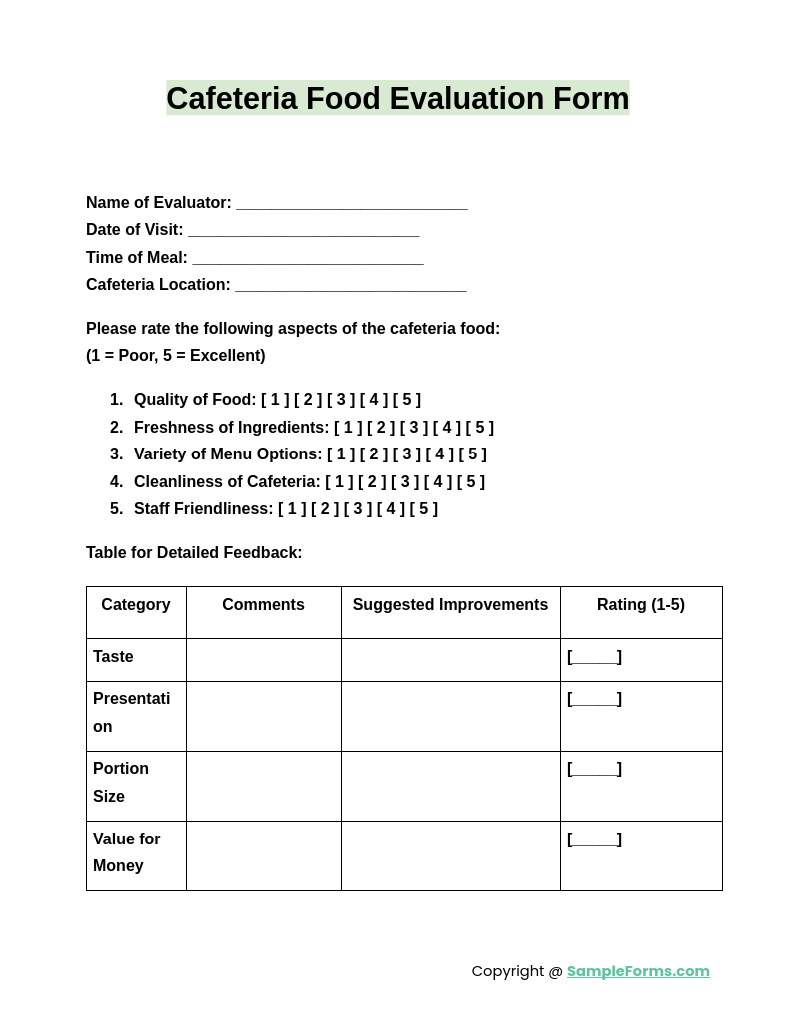
A Cafeteria Food Evaluation Form is designed to assess the quality, taste, and variety of meals provided in school or corporate cafeterias. It gathers feedback on factors like meal temperature, portion sizes, and nutritional value. By collecting responses, cafeteria managers can improve the food offerings to meet employee or student preferences. This form can also be used alongside a Training Evaluation Form to monitor cafeteria staff efficiency, ensuring that they adhere to hygiene and quality standards.
Food Evaluation Form for Students
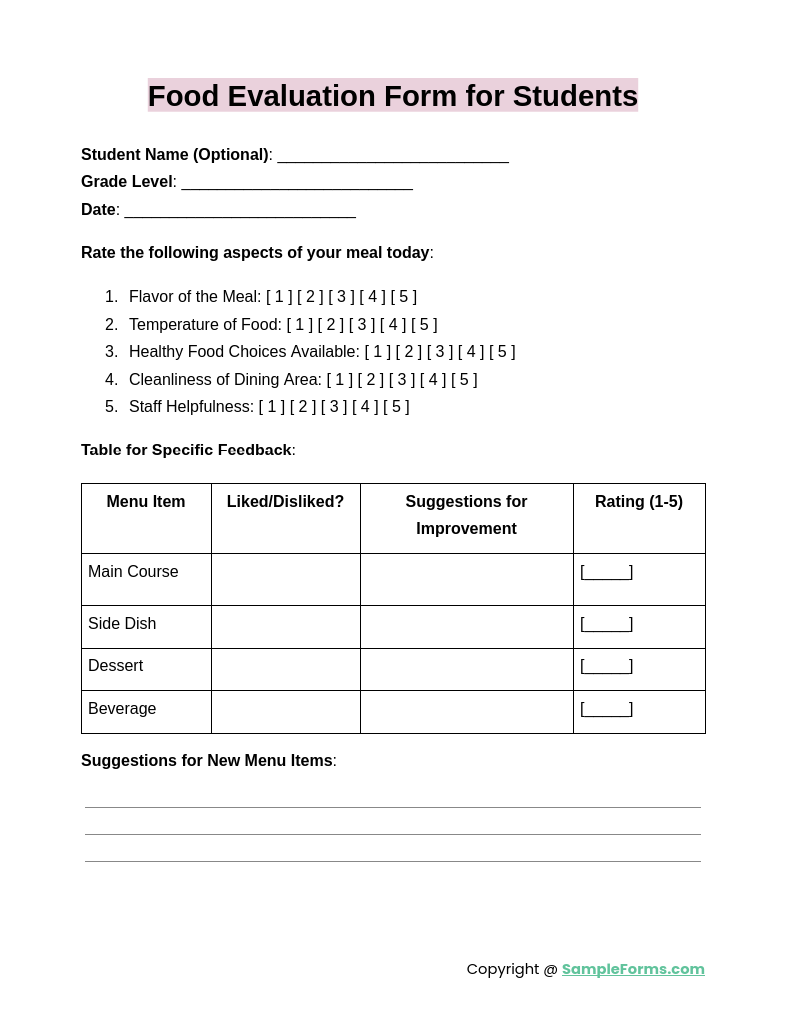
The Food Evaluation Form for Students focuses on gathering student feedback regarding school meals. It helps in assessing whether the meals meet their tastes, dietary needs, and nutritional expectations. Schools can use this form to enhance their food programs, ensuring they align with student health requirements. Additionally, it can be used with an Employee Self Evaluation Form for cafeteria staff to encourage continuous improvement in meal preparation and service.
Food Survey Evaluation Form
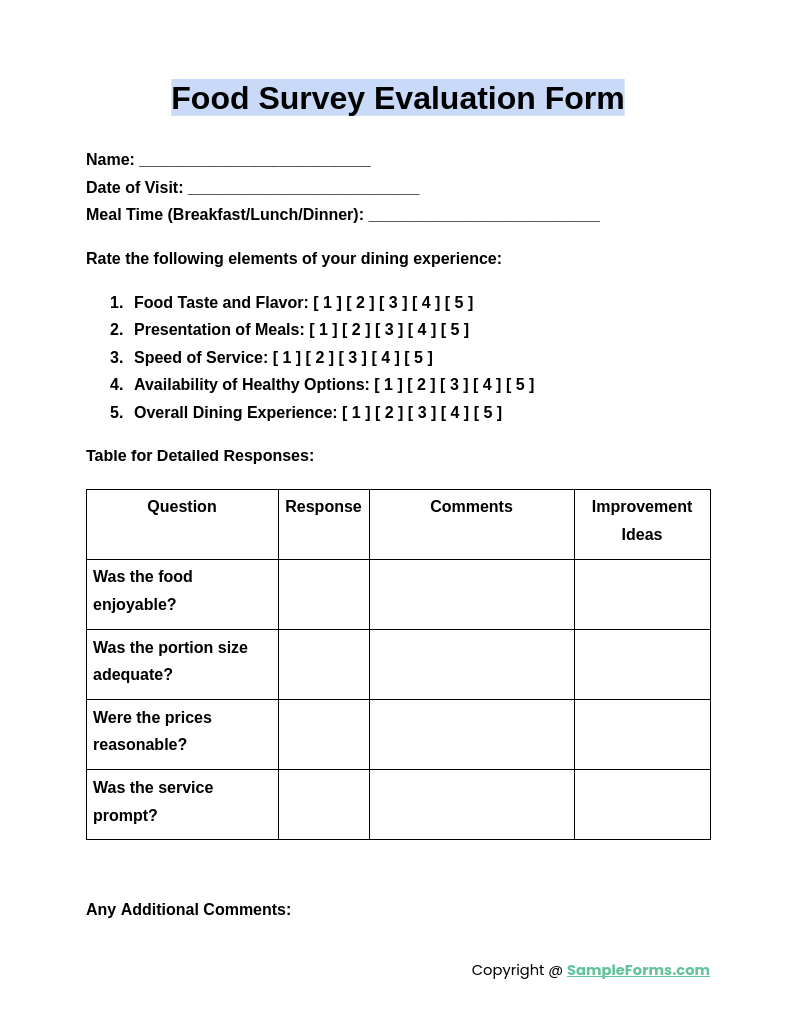
A Food Survey Evaluation Form is used to collect general feedback on food quality, taste, and overall dining experience across various settings like events, restaurants, or canteens. The insights gathered help in identifying areas of improvement, such as menu diversity or service efficiency. This form complements a Peer Evaluation Form to promote collaborative assessments among staff, aiming to enhance the overall food service experience.
Food Service Evaluation Form
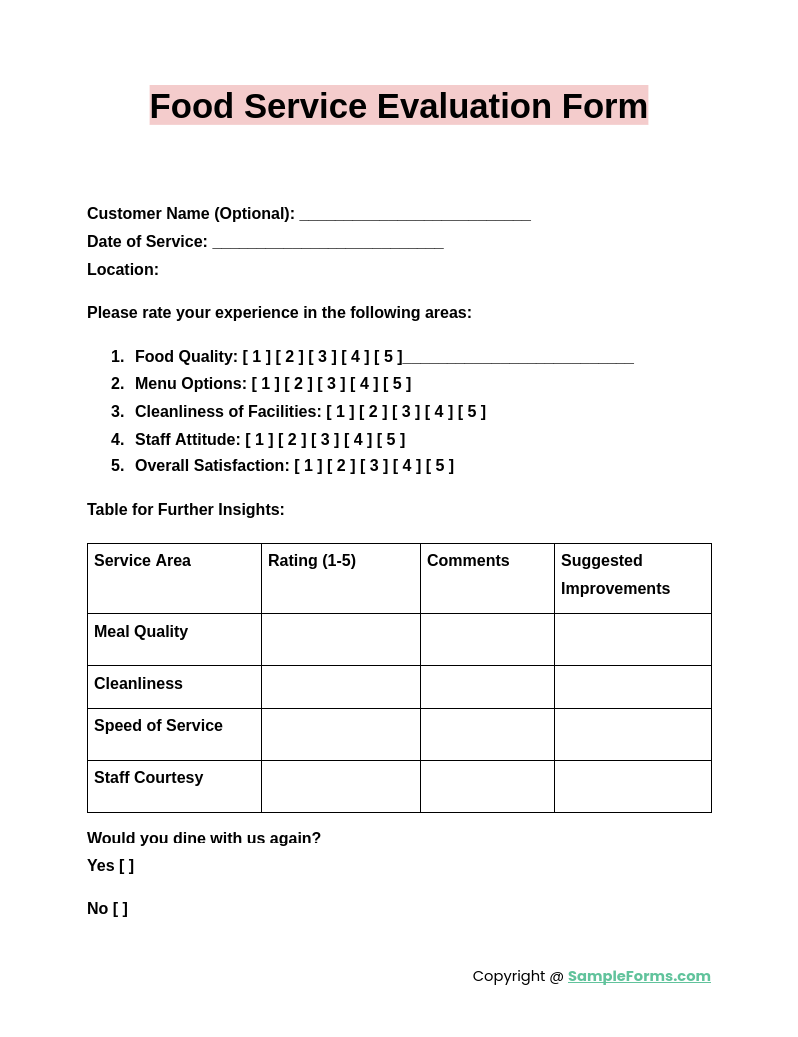
The Food Service Evaluation Form is tailored for assessing the overall performance of food service staff, focusing on promptness, customer service, and meal quality. It helps managers optimize service quality in restaurants, events, or corporate setups. By combining this form with a Call Monitoring Evaluation Form, businesses can ensure that customer feedback is managed effectively, enhancing the dining experience and service standards.
Browse More Food Evaluation Forms
Food Produce Evaluation Form
Food Evaluation Sheet Form
Food Habits Evaluation Form
Food Head Cook Evaluation Form
Menu Planning Evaluation Form
Food Product Evaluation Form
Food Safety Evaluation Checklist
Food Service Employee Evaluation
Food Services Division Evaluation
Foods Lab Evaluation Form
Food Supplier Evaluation Form
Taste Panel Evaluation Form
Taste Testing Evaluation Form
General Cook Evaluation Form
Food Service Performance Evaluation
How to write a food evaluation?
How do I make my own evaluation form?
To create your own evaluation form, outline clear criteria, use a mix of scales and open-ended questions, and tailor it to your needs. Incorporate elements like for detaCourse Evaluation Formiled feedback.
What is a food assessment?
Food assessment analyzes various factors such as taste, texture, nutrition, and safety. It helps in maintaining high standards and ensuring customer satisfaction. Use a Sensory Evaluation Form for effective analysis.
How do you describe bad food?
Bad food can be described as under-seasoned, overcooked, stale, or lacking in freshness. It often leaves an unpleasant aftertaste and fails to meet expectations. You may also see Counselling Evaluation Form
How would you rate the food?
Rate food based on factors like flavor, texture, presentation, and overall satisfaction. Use a Customer Service Evaluation Form to gather detailed ratings from multiple customers.
How do you write a good food review?
Start with a summary of your experience, highlight standout dishes, and provide constructive criticism. Include descriptive words that bring your tasting experience to life. You may also see Medical Evaluation Form
How do you write a good evaluation statement?
A good evaluation statement should be specific, focused on measurable criteria, and offer actionable feedback. It’s similar to creating an Employee Performance Evaluation Form.
How do you describe good food in a sentence?
Good food is rich in flavor, perfectly seasoned, and cooked to perfection, leaving a lasting, delightful impression on your taste buds. You may also see Vehicle Evaluation Form
What is the best compliment for food?
“The dish was absolutely delicious; every bite was a burst of flavor. I would love to have this again!” Compliments can also be part of a Mentor Evaluation Form feedback.
How do you write a short self-evaluation?
Be honest, focus on accomplishments, and highlight areas for improvement. Use tools like a Mentee Evaluation Form to guide your self-assessment.
What is the triangle test in food evaluation?
A triangle test is a sensory evaluation method where participants taste three samples, two of which are identical, to identify the odd one. It’s used in Bid Evaluation Form to ensure product quality.
Incorporating a Food Evaluation Form in your feedback process is essential for continuous improvement. By utilizing forms like the Restaurant Evaluation Form, you can efficiently gather constructive feedback, helping to enhance the quality of meals served, customer satisfaction, and overall dining experience.
Related Posts
-
Chef Evaluation Form
-
FREE 6+ Business Credit Checklist Forms in PDF
-
Employee Pay Increase Form
-
FREE 8+ Kitchen Evaluation Forms in PDF | MS Word
-
Customer Service Evaluation Form
-
FREE 15+ Grant Evaluation Forms in PDF | MS Word
-
FREE 14+ Volunteer Evaluation Forms in PDF
-
Mentee Evaluation Form
-
Speaker Evaluation Form
-
FREE 14+ Vehicle Evaluation Forms in PDF
-
FREE 14+ Trainee Evaluation Forms in MS Word | PDF
-
Resume Evaluation Form
-
FREE 14+ Retreat Evaluation Forms in PDF
-
Debate Evaluation Form
-
FREE 14+ Book Evaluation Forms in PDF | MS Word
